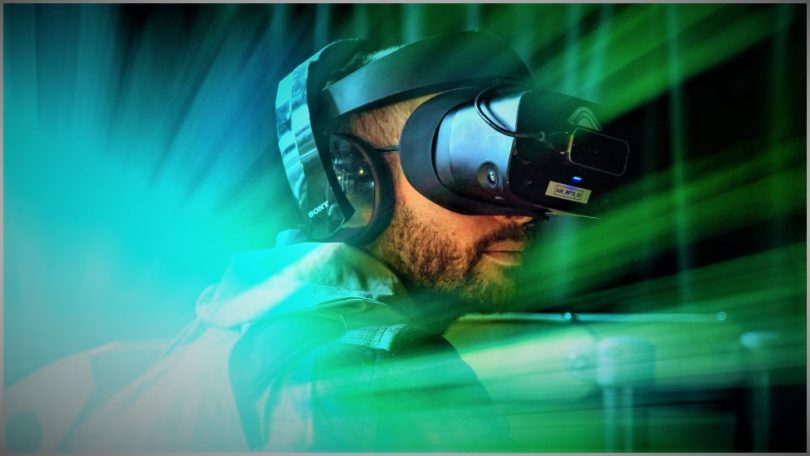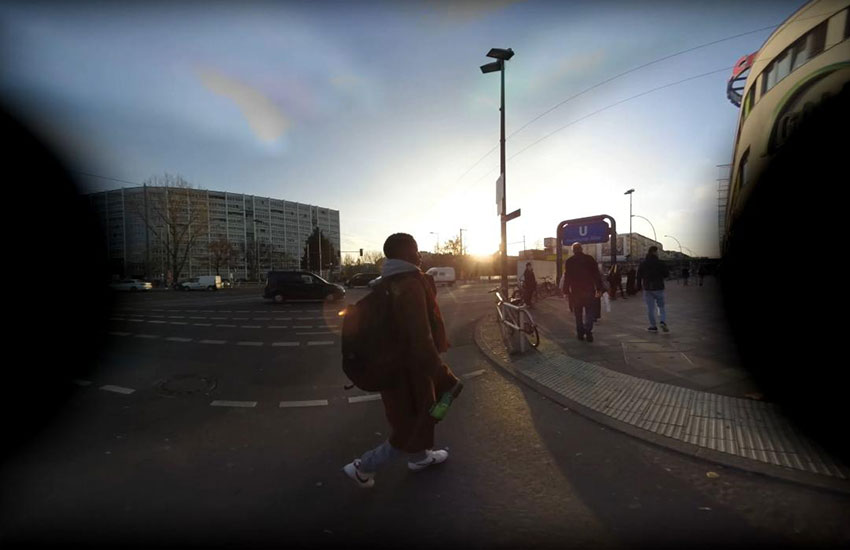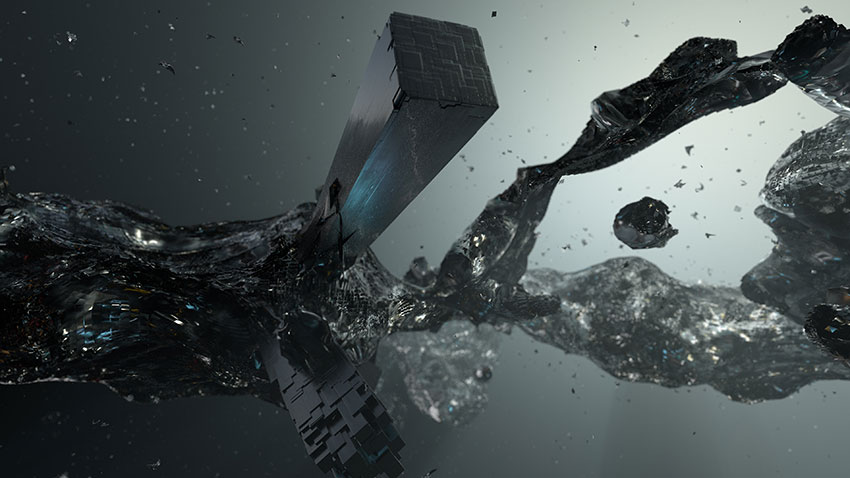Words by Nicholas Burman

The 2020 edition of BFI’s London Film Festival presented the institution with two challenges: how to have a festival in the age of social distancing and integrating films into the programme that go beyond the typical cinema screen.
LFF Expanded was the Festival’s new world of virtual reality filmmaking, curated by Ulrich Schrauth (interestingly, LFF tends to describe their Expanded programme as featuring “art” rather than films). Schrauth has a background in the performing arts, and his selection as curator for Expanded suggests how the film world views these new media: as cousins of film rather than direct descendants, with as much, if not more, in common with theatre and installation art.
While film has often wrestled with home viewing (what goes missing when a film loses the context of the cinema?), it is possible that VR won’t have that problem to the same extent. After all, a VR experience at home doesn’t change the scope of the work. You’re experiencing the work as it was intended to be seen. What does pose a problem is the quality of the available technology: a five hundred euro Oculus Rift is way beyond what most people are willing or able to invest in a young technology with a limited catalogue. And while the quality of an Oculus is generally good, it isn’t the prettiest or the lightest tech accessory.
At home, I’m using the affordable Mr Cardboard. Visually, Google’s Cardboard app demos are near perfect, but YouTube VR offerings are pretty blurry, and there are no options to toggle between resolutions or alignment, which is frustrating. Apart from the blurriness, there seems to be little difference between VR on cardboard and what I’ve experienced on Rift at exhibits. I mention all this here just because VR is a tech-heavy medium, and the success of socially distanced and online accessible VR work will rely a lot on how little at-home viewers have to worry about the tech functioning.
LFF’s Expanded 360-degree selection highlighted one of VR filmmaking’s most prominent trends: intimate documentaries, windows into otherwise “unseen” or underrepresented subjectivities. Baff Akoto’s Virtual (Black) Reality series is an instance of direct cinema reinvented for a VR context. The four instalments trace members of the African diaspora in Europe, each discussing their heritage and their experiences while in their locales and places of work.

The two parts of Fabian Vetter’s People2People series included here, which address the Israeli-Palestinian conflict, and The Martha Street Experience by Peter Collis, about a working-class community in east London, also attempt to engender a sense of intimacy. By placing you into what they are depicting, you get the sense that these films are hopeful that the illusion of a lack of distance will inspire in the viewer a feeling of companionship and comradery with the interviewees.
This seems particularly pertinent to The Martha Street Experience, in which a London street dubbed as dangerous (though presented as mundane) is juxtaposed against the positivity of a youth centre that offers to develop skills and comradeship. Experience is preoccupied with the two sides to every story idea: the outside and the inside, the distant and the close, the look of the thing and how it actually is.
One problematic of this approach is the same that follows all documentary-making. That is when turning someone or a particular situation into a topic, they are often turned into a synecdoche for the social group the documentary contextualises them as being part of: their class, race, or political affiliation, for example. While documentary can help one understand, to a limited extent, a situation from another’s point of view, it can also simultaneously reinforce the Otherness of the subject, them having been positioned as the thing which can be studied.
I am curious as to the extent to which VR, simply through its illusory effect, will mitigate this situation or whether it will get us closer to the Other in a literal sense. Does the VR aspect of Experience, for example, do more to combat and deconstruct negative stereotypes of ethnically diverse working-class neighbourhoods than a flat screen equivalent, just because it is an expanded field of vision?
Theory aside, for me, the Sarah episode of People2People was the most impressive of the aforementioned docs, just because the stark reality of talking about romance over a coffee on a terrace next to the Israeli West Bank barrier is an experience I’ll likely never have, and to see the imposition of that construction in such an intense way is very powerful.
Although essentially unrelated, François Vautier’s two contributions were two of the programme’s more digitally-minded films. In fact, Odyssey 1.4.9 has more to say about 2001: A Space Odyssey, as it explored “the visual language and hypnotic imagery of [Kubrick’s] film in a 3-dimensional kaleidoscope of pictures.” Like his Recoding Entropia, an attack of shapes, a barrage of pulsating alien surfaces, 1.4.9 demonstrates Vautier’s keenness to make VR films that are overwhelming and which make full use of the ‘attack’ simulation that 3D film often makes good use of. I’m not sure that 1.4.9 has much to say about 2001 that 2001 doesn’t already articulate (and any ambiguities are better left that way), but Entropia is a fun dose of digital abstraction complete with an epic, sci-fi soundtrack courtesy of Pascal Bantz.

The highlight of the Expanded films available to watch from home was undoubtedly Darren Emerson’s Common Ground. Also, a documentary, and so open to the same critiques I laid out above, this half an hour history of social housing in the UK makes excellent use of all of VR’s interesting potential. About and filmed in South London’s (in)famous Aylesbury Estate, the film takes us through blueprints and reality, from daily life to political trends, all the while augmenting historical news footage and original interviews into the environment.
It not only makes a viewer intimate with the Estate, but it also utilises VR space, squashing time, and brings speech, photography and footage into play with each other amongst the gentrifying ruins of one of London’s most prominent (now mostly demolished) modernist monuments. Common Ground is a good example of what Daniel Worden describes as the documentary aesthetic, which offers us the entanglement of subjective experiences with history and acts as a rejoinder and accompaniment to the ways in which finance capitalism and its intensifications of exploitation, dispossession, and state-sanctioned violence have made the world seem vertiginous and precarious
VR filmmakers are grasping this still-young technology to heighten the effect of the documentary mode; the success of each instance of VR documentary filmmaking depends on the extent to which the particularities of the VR medium are embraced and exploited. As is the case with Common Ground, it not only immerses one into somewhere distant but also creatively shows the historical and imaginary aspects that exist in those places, those aspects of a place which are hard to capture in other traditional forms of visual storytelling.






